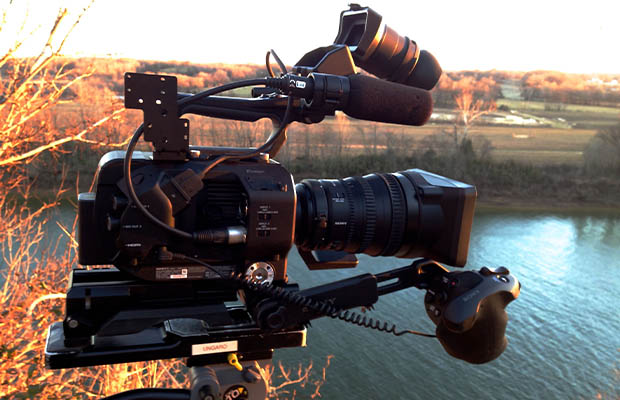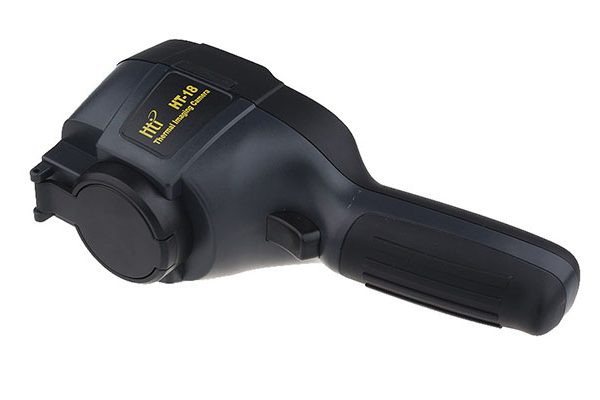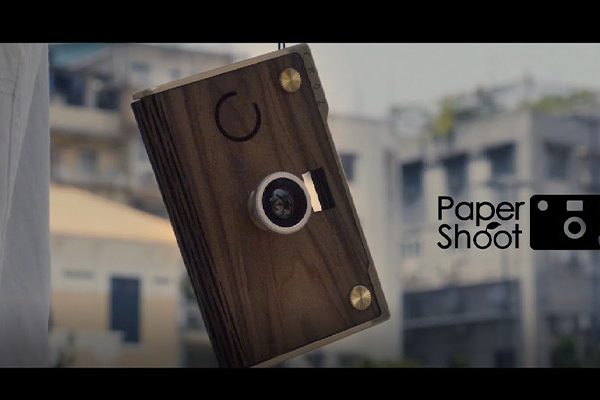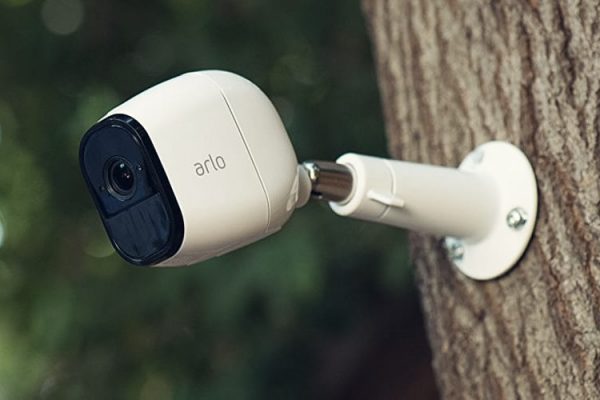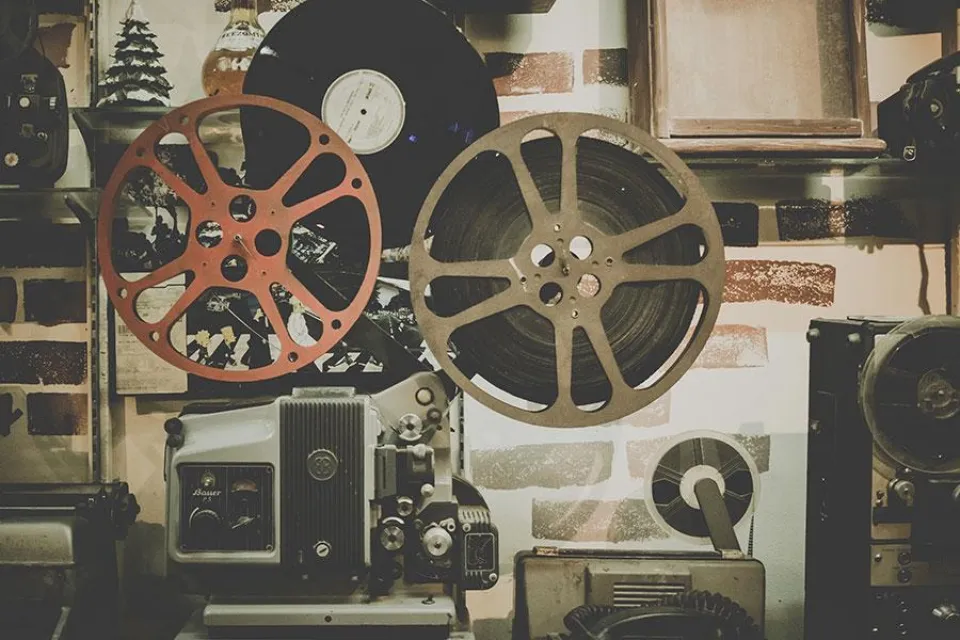Sony is undoubtedly one of the most well-known camera brands. This widely respected electronic brand has made significant contributions to the camera market. While it may not be as old as Nikon and Canon, one thing is certain: people love their video and photography equipment more and more every day.
The best Sony cameras for video are currently available for a variety of uses, including high-end commercial photography, sports photography, and video production.
Take a look at my list of the top 11 Sony video cameras.
Table of Contents
- Best Sony Camera List For Video
- Best Sony Camera For Video Review
- Factors To Consider When Buying The Best Sony Camera For Video
- FAQ
- The Bottom Line
Best Sony Camera List For Video
- 1. Sony A7S III
- 2. Sony Alpha A6100 Mirrorless Camera
- 3. Sony A7R Mark IV
- 4. Sony ZV-1
- 5. Sony Alpha 7 II Mirrorless Camera
- 6. Sony RX100 Digital Camera
- 7. Sony Alpha A7R III
- 8. Sony Alpha 6400
- 9. Sony Alpha A6500
- 10. Sony A9 II
- 11. Sony A7 IV
- Also Read: Best Camera For Teenagers
Best Sony Camera For Video Review
1. Sony A7S III
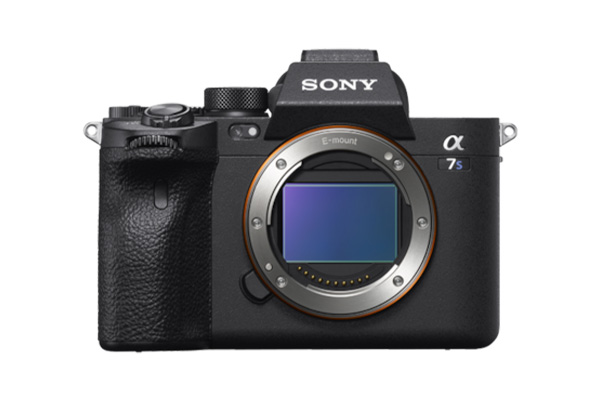
This beast of a low-light camera can record in 4K for incredibly clear clips that entice viewers to watch content all the way through.
Why it is one of the best cameras for video because it can record videos under difficult lighting conditions.
The A7S III is fully touchscreen and has internal image stabilization in addition to having outstanding low-light performance.
It has a maximum frame rate of 120 for 4K video and 240 for Full HD. The camera can record 30+ lengthy clips without overheating because of the Bionz XR.
The Sony A7S III is a beloved companion for professional vloggers and videographers because it is a mirrorless, full-frame brute.
It has a slightly longer lifespan than its predecessors and packs a ton of incredible features for shooting at a pro level.
Its inability to record 6K and 8K videos are one of the few drawbacks. It ought to reach $6,000 given its price point. The camera also produces low-resolution still images.
Features
- Mirrorless
- Bionz X processor
- Full frame camera
- Internal image stabilization
- Top-class autofocus,
- HDMI connectivity
- Multiple picture profiles
Pros
- Does not overheat
- Excellent low-light performance
- Satisfactory battery life
- Top-class Autofocus for quick tracking
- Durable design
Cons
- Low-resolution stills
2. Sony Alpha A6100 Mirrorless Camera
One of Sony’s entry-level mirrorless models, the Sony Alpha A6100, promises quick performance and excellent video quality.
The camera is powered by the highly regarded BIONZ processor, which ensures many hours of shooting without the equipment heating up.
The camera has one of the quickest autofocus systems available, which makes it the best one.
Real-time tracking makes it possible to see human or animal eyes clearly even when they are covered or in shadow.
Through Wi-Fi, remote control, and QR, the Sony Alpha A6100 Mirrorless Camera facilitates sharing and exporting data.
Additionally, it has a microphone, which gives vloggers and other filmmakers more audio options.
Features
- Tilting LCD touchscreen
- 24.2 MP Exmor sensor
- Continuous focus tracking up to 11fps
- BIONZ image processor
- External mic input
Pros
- Very fast autofocus with real-time eye-tracking
- The screen tilts to frame up the subject well
- Accurately optimizes light for superior resolution images
- Impressively high-speed internal processor for clear continuous shots
Cons
- Real-time tracking is still lacking as it doesn’t work on some animals
3. Sony A7R Mark IV
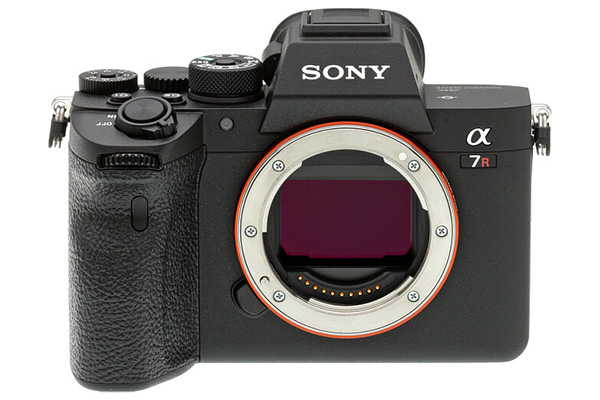
The Sony A7R Mark IV is unquestionably a top dog with its 63 MP resolution, 5-axis image stabilization, and sturdy CMOS image sensor.
Being a mirrorless model, it does include some of the most recent improvements, such as the BIONZ processor, which encourages lengthy filming.
The camera shoots in super 4K resolution and therefore a worthy friend to top professionals. Up to 15 EVs, dynamic range stops can be output while it operates quietly.
Built-in image stabilization is another perk that helps you account for movements.
You should test out the Sony A7R Mark IV if you’re hankering after high-end resolution and durable performance.
But expect to pay a hefty price given its wealth of amazing features.
Features
- Mirrorless full-frame camera
- 63 megapixel
- Up to 4k video quality
- 3-inch tilting touch screen
- Maximum burst at 10 fps
- CMOS image sensor
Pros
- Superior AF coverage
- A very powerful sensor
- Dual media slots to store more footage
- Greater color accuracy
- Advanced subject recognition
- Works silently
Cons
- Some models arrive with focus problems necessitating a return process
- The price is a little on the higher side
4. Sony ZV-1
It’s possible that you don’t have much money to spend on expensive cameras if you’re just starting out in the world of making video content.
However, you also don’t want to sacrifice too many features in the long run, am I right?
The Sony ZV-1, guess what might be the answer to your problems. This portable flip-screen camera captures stunning 4K HDR videos and has live streaming functionality.
The autofocus system is extremely quick, enabling fluid real-time autofocus.
The Sony ZV-1 includes a 20.1MP sensor, professional video capabilities, and image stabilization features of average quality that are typically found on high-end camera models.
Although the camera has a lot of capabilities, YouTubers and Vloggers prefer to use it.
Features
- Flip-screen
- Touchscreen display
- Built-in mic
- 4K video footage
- Live streaming capability
- Bionz image processor
Pros
- Great image stabilization
- A fast, hybrid AF system for stellar quality output
- Does not overheat
- Ample pro video functions for post-production
- Affordable Sony video camera
- The screen flips to make video shooting easier
Cons
- The touch screen experience is not the best
- Could use more front dials
5. Sony Alpha 7 II Mirrorless Camera
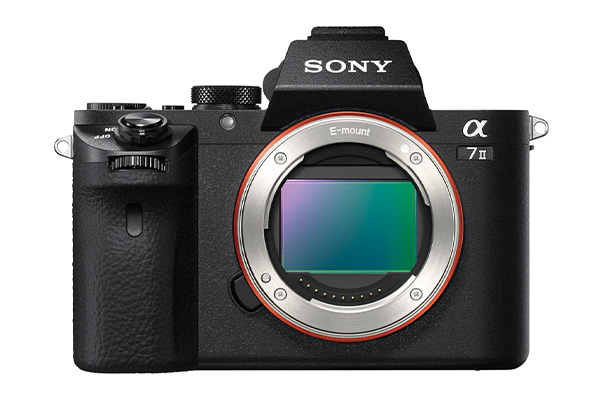
Each and every content producer aspires to take steady photos and videos with amazing resolutions.
Full-frame cameras like the Sony Alpha 7 II can help you accomplish this.
This gem generates videos and images with incredible resolutions using a 24.3 MP image sensor. The sensor can also be customized by cropping it.
This beast’s ability to work with a variety of lenses as a professional mirrorless model gives experts more options.
Sony Alpha 7 II’s hybrid autofocus is downright remarkable. As a result, those fleeting photo opportunities can be captured very quickly.
The fast BIONZ X processor makes sure that every shoot captures details exactly as they appear to the human eye.
In other words, the Sony Alpha 7 II is for people who don’t want to spend a lot of money or very little. They would prefer to remain in the center instead.
Features
- 24.3 MP resolution
- SLR-style mirrorless camera
- Hybrid autofocus system
- Top-ranking 5-ibis (in-body image stabilization)
- BIONZ X image stabilization
Pros
- Outstanding stability thanks to 5-ibis
- Supports multiple lenses
- Speedy and effective subject tracking
- A tiltable screen that allows low and high-angle framing
Cons
- Dismal battery life
- Some dials are too close and get accidentally nudged during shooting
6. Sony RX100 Digital Camera
Are you among those who refuse to spend $1,000 on one of the top Sony video cameras? You do, however, still demand the top equipment, right?
You could test out a Sony RX100 digital camera, though.
For use by professionals, the camera efficiently captures full HD videos with excellent detail.
You can rest easy knowing that it’s possible to shoot stills more quickly, accurately, and in a variety of formats thanks to the BIONZ X processor.
The tilting screen on the Sony RX100 Digital Camera enables accurate object positioning. For those who enjoy taking selfies, tiltable displays are fantastic.
To enable longer shooting times, the camera severely compresses the files.
Features
- Shoots burst up to 10fps
- 3-inch tiltable LCD screen
- Steady-shot image stabilization
- NFC and Wi-Fi for sharing
- Shoots footage up to 1080p
- Exmor R CMOS sensor
Pros
- Shoots video in different formats for easy sharing
- Compresses footage so more files can be stored
- Seamlessly pairs with other devices for data sharing
- Selfie-ready multi-angled display
- Shoots clear footage even in dim situations
Cons
- Cannot shoot past 1080p
7. Sony Alpha A7R III
The Sony Alpha A7R III camera is unquestionably the best of superb craftsmanship, according to the numerous favorable reviews it has so far received.
When it comes to recording performance, you can capture fast-moving subjects with its outstanding CMOS sensor at 10 frames per second without losing autofocus tracking.
When recording 4K videos, the device operates without a hitch and doesn’t get too hot.
Further advancements in sensitivity, processing, and dynamic range enable professional-level recording for those once-in-a-lifetime memories.
The Sony Alpha A7R III is built to handle difficult low-light shooting scenarios. Furthermore, its design is both robust and compact.
Features
- CMOS sensor at 10fps
- Pro-level recording
- Crisp clear videos and stills
Pros
- Strong and compact body
- Excellent tracking in continuous shooting mode
- Compatible with multiple lenses and accessories
- Stunning bit depths for a fully dynamic experience
Cons
- It costs a lot
8. Sony Alpha 6400
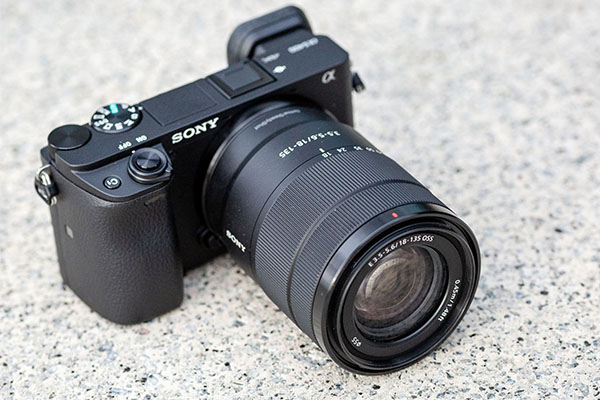
It marked the start of my journey to embrace my passion.
I was starting from scratch and had relatively little money when I entered the field.
I’ve started looking for a camera with a limited budget.
Because of Sony’s reputation for dependability, I was mostly interested in purchasing one.
Being strapped for cash, I trusted fate and, thank God, managed to get my hands on the Sony Alpha 6400, which is the best Sony camera for video under $1,000.
Features
- Explicit 4K videos
- Revolutionary 4D FOCUS
- Stunning quality
Pros
- 24.2 Exmor CMOS sensor
- BIONZ X image processor
- Front-end LSI
- 4K recording
- 425 phase/ 425 contrast detection points
- Real-time eye AF
- Real-time object tracking
- Up to 11fps continuous shooting
- ISO 100-102400
- Time-lapse
- Slow/quick motion
Cons
- In-body image stabilization is absent.
- a few practical annoyances
- UHS-I card niche.
8. Sony Alpha A6500
Sony’s Alpha A6500 camera, while not a filmmaking flagship, is a respectable pick and produces results that are of a high caliber.
Internal image stabilization for still videos is a feature of this mirrorless system.
In addition to full HD quality (at 11 fps), the camera can easily capture brief 4K clips.
Through the use of cutting-edge processing, it can shoot continuously while remaining silent and acquiring focus in an astounding 0.05 seconds.
The Sony Alpha A6500 has a number of outstanding improvements that set it apart from the Sony Alpha 6100 and A6400-predecessors.
It is a valuable companion to bring on a filming trip for beginning professionals on a budget.
Features
- In-body image stabilization to steady the lens
- Continuous shooting mode
- Advanced processing
- Silent shooting
- 4k quality clips
- Touchscreen
- Features one of the best AF acquisition system
- Full resolution images at 11 fps, continuous autofocus, and exposure tracking
Pros
- In-body stabilization to minimize camera shake
- Reliable processing power
- Silent performance
- Touch-screen enabled
- High-quality video clips
Cons
- Lacks high-end features
9. Sony A9 II
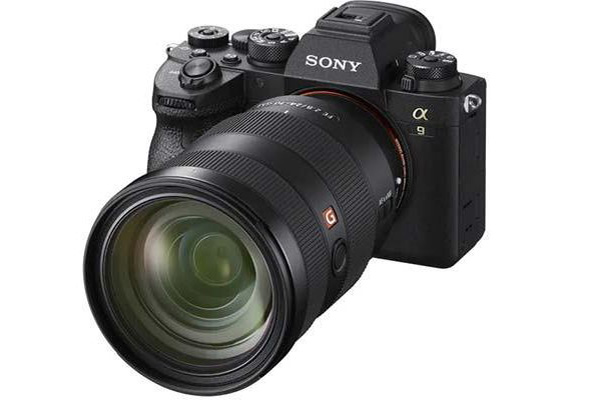
If you are a wealthy sports videographer whose work is consistently held up as the gold standard, you may be in for something truly amazing.
And guess what? The Sony A9 II may check a lot of your boxes.
This camera can shoot bursts of up to 20 frames per second while recording 4k videos at 30 frames per second.
Its full-frame sensor is capable of producing a sharp, clear video that is aberration-free.
The Sony A9 II makes no assumptions regarding connectivity. It has an Ethernet port, fast 2.4 or 5 GHz Wi-Fi, and a secure FTP transfer.
As you can see, using this camera to transfer data is simple and straightforward.
The Sony A9 II, a regrettably extremely expensive Sony video camera, is gradually losing ground to the Sony Alpha 1.
The A1 has impressive upgrades like a 50MP sensor, 8K video output, and top-notch anti-flicker. A9 II is still a fantastic option for discriminating professionals.
Features
- Interchangeable lens
- Built-in connectivity
- 24.2 MP
- Mirrorless full-frame camera
- Up to 4k resolution
- Real-time tracking
- Voice memo function
- 3-inch tilting touchscreen
Pros
- Amazing autofocus
- Unrivaled connectivity
- Highly advanced subject recognition
- Reliable image stabilization
- Super-speed sensor for fast performance
- A compact design that fits in the hands perfectly
Cons
- It’s an expensive sports camera
- The menu system is awkward
10. Sony A7 IV
Recently, a few days ago, I teamed up with a well-known clothing brand for their promotional video.
I favor using a larger creative leeway when shooting videos. Possessing the Sony A7 IV, in contrast, always provides amazing creative opportunities.
Fortunately, I chose one of the best Sony cameras for this project to create a video that has worked wonders.
With its ground-breaking artistic methodology, this camera was created.
Features
- Fast Hybrid AF
- Rich color expression
- Re devised sensor and speedy processor
Pros
- 33MP Exmor R CMOS sensor
- BIONZ XR processor
- 10fps shooting rate
- 4K at 60p video recording
- 7K oversampling
- S-Cinetone color profile
- SteadyShot image stabilization
- Fast Hybrid AF
- Real-time Eye AF
- 4320p video resolution
- Electronic viewfinder
Cons
- For videotaping, lower-pixel cameras are preferable.
- Phase Discovery doesn’t go all the way to the edge of the frame.
Factors To Consider When Buying The Best Sony Camera For Video
What kind of videos you intend to produce should be taken into consideration. You might want to invest in a lightweight camera, which is ideal for wedding and travel photographers who need to be able to carry their equipment around easily.
However, if you plan to do a lot of editing and post-production work, you might need a camera with solid log profiles or even one that can record up to 10-bit because you’ll need a deeper level of color for color correction in post-production.
Consider your intended use for your camera, then select the best option based on the types of videos you intend to make.
Resolution
Resolution is the measure of how many horizontal and vertical pixel lines are present in video or broadcast footage. The more significant the number, the sharper and more precise the details!
The following categories apply to the most popular resolutions of today:
- 360p, meaning 480 x 360 pixels, known as low resolution and are suitable to view on your phones
- 480p, 720×480 pixels, known as the standard resolution for burning to DVDs
- 720p, 1280 x 720 pixels, known as high resolution for viewing on most TVs
- 1080p, 1920 x 1080 pixels, also known as full HD (High Definition), suitable for high-res TVs
- Ultra 4K HD, 3840 x 2160 pixels, great for 16:9 TV resolution for 4K broadcast
- Cinema 4K, 4096 x 2160 pixels, a high resolution for 1.9:1 cinema projection
Obviously, depending on your screen, the higher the “p,” the higher the recording resolution, and the better quality of the output.
With the advent of 8K resolution, the trend has advanced further today.
Compatible Accessories
The availability of compatible accessories should always be taken into account. What types of microphones and headphones can be supported by the camera you want to purchase?
Frame Rate
Frame rate, commonly written as fps, or “frames per second,” refers to the speed at which the images in the video are displayed.” The smoother the video, especially in slow motion videography, the higher the frame rate.
Processors, Sensor, And Image Stabilization Function
Make sure you purchase a camera with powerful processors, excellent sensors, and an in-body image stabilization function if you intend to shoot in low light or may need to take a lot of handheld pictures due to time and space constraints.
Your camera will operate more quickly the faster the processor, and a scene can be captured with more light on a larger sensor.
You can create steady, clear footage for the video by combining better in-body image stabilization.
Log Profiles
The depth of color that is captured, which is a crucial element for color correction in post-production, is primarily related to whether the camera supports log profiles, so find out if it does.
Normally, I would advise purchasing a camera capable of recording high-resolution videos at 60 frames per second, i.e. 60 distinct still images will be shown per second.
Other Features
- The high number of Autofocus (AF) points potentially increases the quality of overall videos with less aberration per pixel
- Try to get a camera with phase detection to minimize the familiar blurry look in the middle of a video when the camera starts hunting for the right focus
FAQ
Which Sony Camera Makes The Best Videos?
Sony makes many reliable video cameras, but the Sony A7, Sony Alpha 7C, Sony Alpha A7iii, Sony Alpha A7Riii, Sony Alpha A1, and Sony Alpha 6400 stand out for shooting videos.
For Filmmaking, Are Sony Cameras Suitable?
Along with Canon, Panasonic, and Nikon, Sony is unquestionably one of the top brands in the industry.
The newest mirrorless models are the ones that the company produces the best video cameras for.
What Are Some Of The Most Popular Cameras For Taking Professional Videos?
Sony FX3, Canon EOS C70, Panasonic Lumix BS1H, Blackmagic URSA Mini Pro G2, Panasonic AU-EVA1, and a few others are some of the cameras for shooting video that is well-known.
Which Is Better, Sony Or Canon?
Photographers love and adore Canon.
But with its cameras sporting numerous top-of-the-line features, Sony has improved its video game.
What Video Format Does Sony Use In Their Cameras?
Sony lenses are capable of recording video in both compressed and raw formats.
Sony cameras support the following notable file types: MP4, M4V, AVI, and H. 264, MXF, and MOV.
The Bottom Line
The cameras we will discuss in this article today are all covered, all right, guys.
There are a lot of top Sony video cameras. What Sony models do you think are the best for video?
Do you prefer using a particular camera that I didn’t mention in this article?
Please comment below with your ideas and thoughts.

